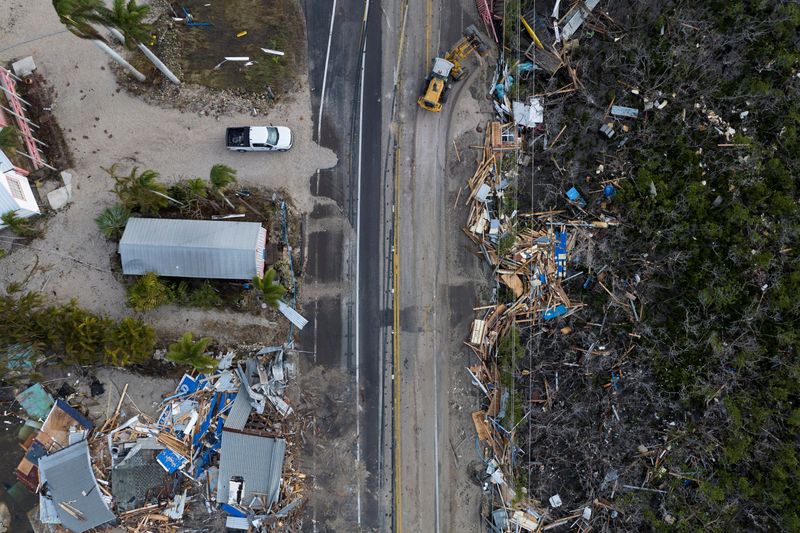(Reuters) -Hurricane Milton made landfall on Florida's west coast on Wednesday evening before driving across the state's peninsula and blowing out to the Atlantic by morning.
The storm damaged buildings and infrastructure and brought intense rainfall, but the catastrophic storm surge that had been feared never materialized. In central and eastern Florida, Milton triggered tornados that are believed to have killed at least four people.
WHEN AND WHERE DID HURRICANE MILTON MAKE LANDFALL?
After rapidly intensifying to a rare Category 5 hurricane followed by a gradual weakening to a Category 3 in the Gulf of Mexico, the eye of Milton made landfall at about 8:30 p.m. on Wednesday near Siesta Key in Sarasota County on Florida's western coast, according to the U.S. National Hurricane Center. Siesta Key is south of the densely populated Tampa Bay area, which authorities feared would sustain a direct hit, its first in about 100 years.
WHERE IS HURRICANE MILTON NOW AND WHERE IS IT HEADING?
Milton spent about 12 hours crossing central Florida, and as of Thursday morning had left the state's east coast and was heading over the Atlantic Ocean where it will dissipate. It is forecast to move north of the Bahamas later on Thursday, where some northwestern islands in the archipelago will experience tropical-storm conditions.
WHAT DAMAGE HAS HURRICANE MILTON CAUSED IN FLORIDA?
Tornados spawned by Milton killed four people in St. Lucie on Florida's east coast, including at least two people in a retirement community. More than 3.4 million customers were without power on Thursday, according to the tracking service PowerOutage.us. State and local officials are assessing the damage, but as of Thursday morning Milton was known to have destroyed at least 100 homes and left a gaping hole in the fabric roof of Tropicana Field, the baseball stadium in St. Petersburg. It toppled a construction crane in St. Petersburg.

WHAT ARE THE FIVE MOST-INTENSE ATLANTIC HURRICANES?
The lower a hurricane's minimum central pressure, the more intense it is. Milton is the fifth-most-intense hurricane recorded in the Atlantic - which includes the Gulf of Mexico - although it weakened significantly before making landfall. The most-intense hurricane on record is Wilma in 2005, followed by Gilbert in 1988, the Labor Day hurricane of 1935, and Rita in 2005.